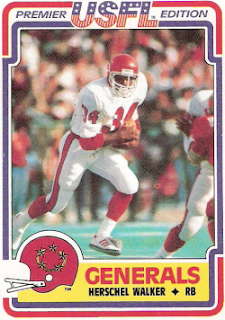
After steadily progressing in their first three seasons in the NFL, the Houston Texans dropped to a league-worst 2-14 record in 2005. Head Coach Dom Capers and his staff were dismissed, and offensive-minded Gary Kubiak was hired in his place.
However, with the first pick in the NFL draft on April 29, 2006 the Texans opted for help on defense and made official the selection of North Carolina State DE Mario Williams as their choice (he had actually been signed to a contract the night before).
The decision drew criticism from both commentators and fans. At a draft party held at Reliant Stadium, many of the attendees booed the selection of Williams and began chanting “Reg-gie! Reg-gie!” in reference to Reggie Bush, the star running back and Heisman Trophy winner from USC. There had also been sentiment for picking a local favorite, QB Vince Young from Texas. They ended up being the next two players drafted, by the Saints and Titans, respectively.
Not all of the reviews were critical, to be sure. As one scout said, “I like the Texans’ pick of Mario Williams over Reggie Bush. If you tell me I can have a great running back or I can have a great defensive end, I’ll take the defensive end every time. He’ll have a longer career, he’s on the field for more plays, and defensive ends are harder to find than running backs.”
The 6’7”, 295-pound Williams had chosen to leave school early to enter the draft, but was considered by scouts to be ready for the NFL. In 2005, he had recorded 62 tackles (24 of them for a loss) and 14.5 sacks over the course of 12 games. Moreover, he filled a clear need for a Houston defense that had ranked next to last in the league, including 32nd against the run and 24th vs. the pass (to be sure, they ranked 30th in total offense as well). New defensive coordinator Richard Smith was replacing the 3-4 scheme favored by Capers with a 4-3 alignment, and Williams seemed a good fit for the revamped defensive line.
Initially, the critics appeared to be vindicated by the results of the 2006 season. While the team’s record improved to 6-10, Williams suffered through an injury-marred and inconsistent campaign and recorded just 4.5 sacks. Meanwhile, Bush proved to be a potent complement to power runner Deuce McAllister, accumulating 1523 all-purpose yards (742 on 88 pass receptions alone) as the Saints ranked first in team offense and made it to the postseason. Vince Young showed great promise with the Titans, passing for 2199 yards and running for another 552 while being selected Offensive Rookie of the Year by the Associated Press.
The Houston offense ranked 28th in the NFL. QB David Carr, the first player ever drafted by the club in 2002, continued to be mired in mediocrity. RB Ron Dayne led the team in rushing with 612 yards. A revamping followed in the offseason.
However, the situation for Williams, especially in comparison to Bush and Young, shifted significantly from 2007 onward. Healthy and playing with greater confidence, he tied for third in the league in sacks with 14. In ’08, he had another 12 sacks, was a first team All-NFL selection of The Sporting News and second team pick by the AP, and went to the Pro Bowl for the first time. That was followed up in 2009 with another Sporting News first team All-NFL pick and second Pro Bowl invitation.
Reggie Bush failed to build upon his fine rookie season and his performance was decidedly uneven. While a dynamic player with outstanding outside running ability and good receiving skills out of the backfield who contributed to a championship team, he had durability issues and did not fulfill the hopes that he could be an every-down running back – let alone an elite performer. He averaged just 3.7 yards-per-carry in his first three seasons (although he also caught 213 passes). Strictly a role player, his numbers in all categories declined in 2009 - but his postseason performance was solid, in particular an impressive showing against Arizona in the NFC Divisional playoff.
Vince Young struggled in his second season and was benched for virtually all of his third; brought back into the starting lineup midway through the ’09 campaign with favorable results, his career is at an uncertain stage.
While all three careers are very much in progress, after four seasons, the selection of Williams in the top spot of the first round in ’06 has looked more justified with each passing year.



















































